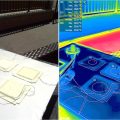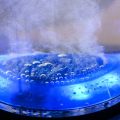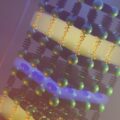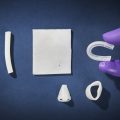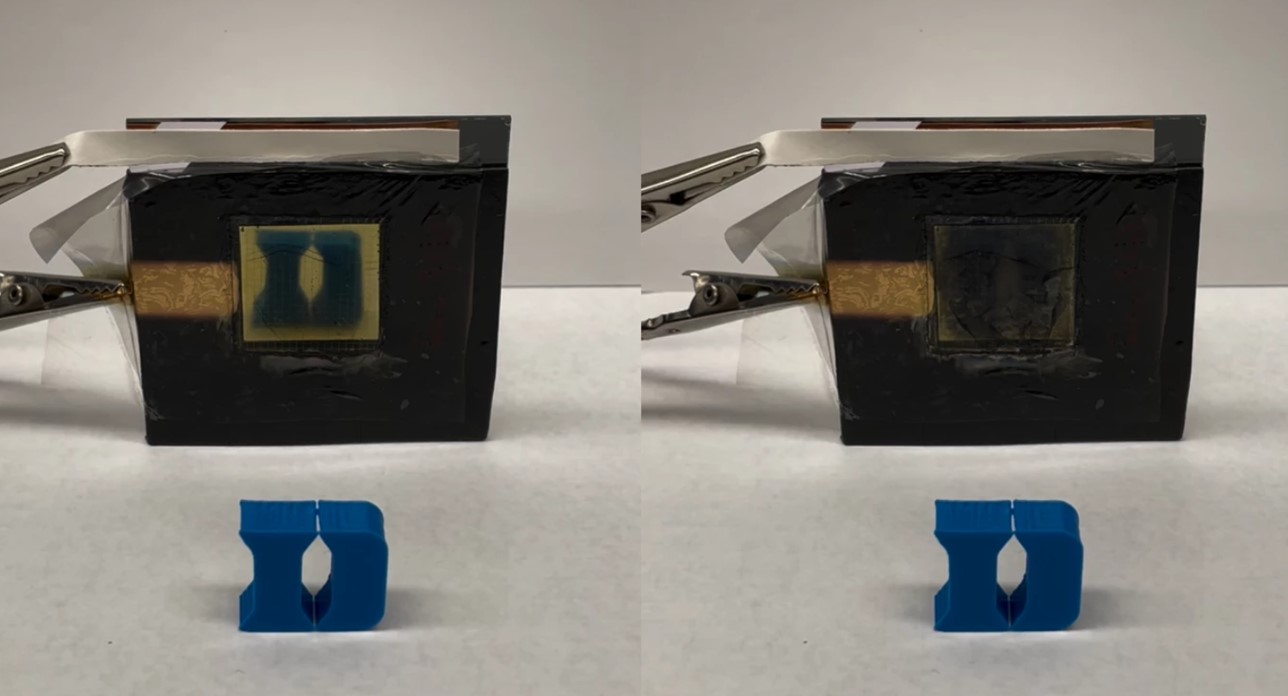
Researchers have developed an electrochromica material that can be switched between absorbing and reflecting light, making it suitable for both cooling and heating buildings.
Recently, we have already become availableelectrochromic windows and sunglasses, which can optionally be made transparent or electrically tinted. Now engineers at Duke University have decided to apply this technology to a material for covering the external walls of structures for their thermoregulation.
The presented small sample consists of twoelectrode layers of graphene, on one side of which a gold mesh is applied to improve conductivity. Between these sheets there is a liquid electrolyte made of metal nanoparticles. At the bottom of the material there is a reflective layer that acts as a mirror.
When supplying electricity in one direction,nanoparticles are attracted to the top electrode. This makes the electrolyte black, causing it to absorb incident light (visible and near infrared). As a result, the material heats up and passively helps the heating system heat the building.
If the direction of the electric current is changed toon the contrary, the nanoparticles are repelled by the electrolyte and scatter, making it transparent and revealing the lower layer. This mirror reflects sunlight away from the material and also removes near-infrared (heat) radiation behind it. By helping the building stay cool in this way.
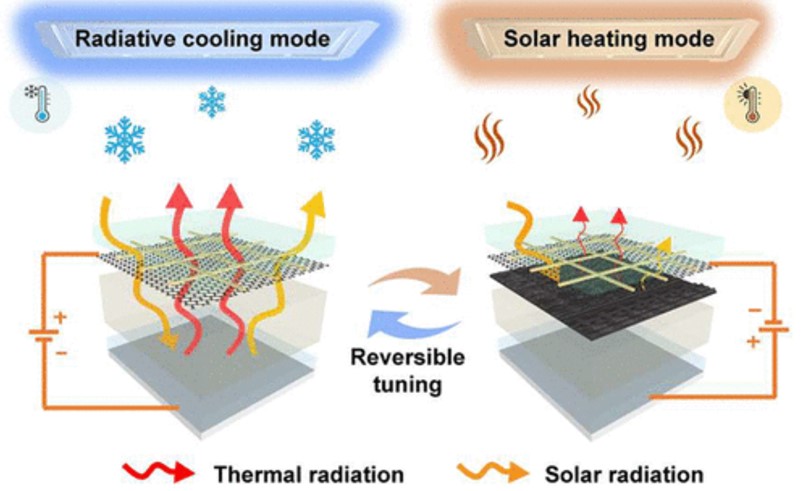
It is important to note that the reflective layer is opaque, so the material is not suitable for use as window glass.
The created material works well enough, butthe efficiency of the current prototype begins to decline after 24 switchings. Therefore, a team of scientists is now looking for ways to increase the number of effective cycles.
We also previously reported on the development of an improved white paint that, when applied to roofs or exterior walls of a building, reflects up to 98% of solar radiation, reducing wall temperatures.
</p>